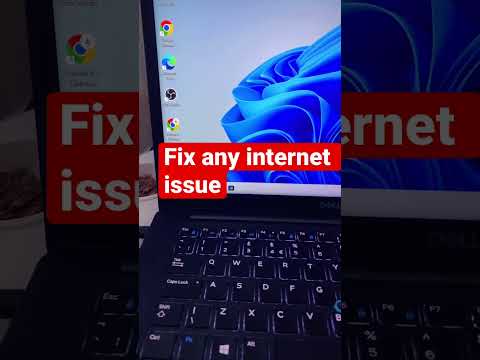
Transforming Timor-Leste: Unleashing the Power of Digital Inclusion and Connectivity
- Current State of Internet Access and Usage
- Emerging Technologies Shaping Digital Progress
- Key Players and Market Dynamics
- Projected Expansion and Adoption Rates
- Connectivity Disparities Across Regions
- Anticipated Developments in Digital Infrastructure
- Barriers to Progress and Pathways for Advancement
- Sources & References
“Timor-Leste (East Timor) is making strides to overcome a long-standing digital divide.” (source)
Current State of Internet Access and Usage
Timor-Leste, one of Southeast Asia’s youngest nations, has made significant strides in expanding internet access over the past decade. As of early 2024, internet penetration in Timor-Leste reached approximately 38% of the population, up from just 27% in 2021 (DataReportal). This growth is largely attributed to government initiatives, international partnerships, and the increasing affordability of mobile devices.
Historically, Timor-Leste faced substantial challenges in digital infrastructure due to its mountainous terrain, dispersed rural communities, and limited investment. Until recently, most internet access was concentrated in the capital, Dili, and a few urban centers. However, the government’s National Broadband Plan, launched in 2022, has prioritized rural connectivity and digital literacy, aiming to bridge the digital divide by 2025 (ITU).
Mobile internet is the primary mode of access, with over 95% of internet users relying on smartphones. The number of mobile connections reached 1.3 million in January 2024, surpassing the country’s total population due to multiple SIM ownership (GSMA). Fixed broadband remains limited, with less than 2% household penetration, mainly due to high costs and infrastructure gaps.
In 2023, Timor-Leste signed an agreement to connect to the North-West Cable System, a subsea fiber-optic cable linking the country to Australia and Indonesia. This project, expected to be operational by late 2025, promises to dramatically improve bandwidth, reduce latency, and lower internet costs (Capacity Media).
- Key challenges: High data costs, limited digital literacy, and uneven rural access.
- Opportunities: E-government, digital education, and e-commerce expansion as connectivity improves.
By 2025, Timor-Leste aims to achieve 60% internet penetration, with a focus on inclusive access and digital skills development. The country’s internet evolution is central to its broader socio-economic transformation, promising to bridge the digital divide and foster greater participation in the global digital economy.
Emerging Technologies Shaping Digital Progress
Timor-Leste’s journey toward digital transformation is accelerating, with 2025 poised to be a pivotal year in bridging the nation’s digital divide. Historically, Timor-Leste has faced significant challenges in internet connectivity due to its rugged terrain, limited infrastructure, and high costs of international bandwidth. However, recent technological advancements and strategic partnerships are reshaping the digital landscape.
One of the most significant developments is the planned connection to the Asia Connect Cable (ACC-1), a submarine fiber-optic cable system expected to be operational by late 2024. This infrastructure will link Timor-Leste directly to Australia and Indonesia, drastically increasing bandwidth capacity and reducing latency. According to the World Bank, this upgrade could lower internet costs by up to 60% and expand high-speed access to underserved regions.
Mobile internet is also on the rise. As of early 2024, mobile penetration reached 95%, with 4G services covering over 80% of the population (DataReportal). The government’s National Digital Strategy 2022–2032 prioritizes universal access, digital literacy, and e-government services, aiming to connect all public schools and health centers by 2025.
- Satellite Internet: Partnerships with providers like Starlink are being explored to reach remote communities, offering speeds up to 100 Mbps where terrestrial networks are impractical.
- Public Wi-Fi Initiatives: The government and NGOs are rolling out free Wi-Fi hotspots in Dili and rural towns, targeting youth and small businesses.
- Digital Skills Training: Programs supported by the UNDP and local universities are equipping citizens with essential digital skills, fostering entrepreneurship and job creation.
Despite these advances, challenges remain. Affordability, digital literacy gaps, and reliable electricity supply continue to hinder full digital inclusion. Nevertheless, with robust infrastructure projects and inclusive policies, Timor-Leste is on track to significantly narrow its digital divide by 2025, unlocking new opportunities for economic growth and social development.
Key Players and Market Dynamics
Timor-Leste’s internet landscape is undergoing significant transformation as the nation strives to bridge its digital divide by 2025. Historically, Timor-Leste has faced challenges in internet penetration due to limited infrastructure, high costs, and geographic barriers. However, recent initiatives and the entry of new players are reshaping the market dynamics and accelerating digital inclusion.
-
Key Players:
- Timor Telecom remains the dominant fixed-line and mobile operator, providing the backbone for much of the country’s connectivity. The company has invested in expanding 4G coverage and is preparing for 5G trials.
- Telkomcel, a subsidiary of Indonesia’s Telin, has rapidly increased its market share since its 2013 launch, focusing on mobile broadband and affordable data packages.
- Telemor, backed by Vietnam’s Viettel, is a key competitor, known for aggressive pricing and rural outreach, helping to drive mobile internet adoption in underserved areas.
-
Market Dynamics:
- Infrastructure Expansion: The government’s National Broadband Plan aims to connect 95% of the population to high-speed internet by 2025, leveraging public-private partnerships and international funding.
- Submarine Cable Projects: The planned Timor-Leste–Australia submarine cable (expected completion in 2025) will dramatically increase bandwidth, reduce latency, and lower wholesale costs, making internet more accessible and affordable.
- Mobile-First Growth: With mobile penetration at 98% and internet penetration rising to 52% in 2023 (DataReportal), mobile broadband is the primary driver of digital inclusion, especially in rural areas.
- Regulatory Reforms: The Autoridade Reguladora das Comunicações (ARCOM) is fostering competition and consumer protection, encouraging investment and innovation in the sector.
As Timor-Leste approaches 2025, the interplay between established operators, new infrastructure, and supportive regulation is set to narrow the digital divide, enabling broader access to digital services and economic opportunities.
Projected Expansion and Adoption Rates
Timor-Leste’s internet landscape is poised for significant transformation in 2025, as government initiatives and private sector investments converge to bridge the nation’s persistent digital divide. As of 2023, internet penetration in Timor-Leste stood at approximately 38% of the population, with around 500,000 users out of a total population of 1.3 million (DataReportal). This figure, while a marked improvement from previous years, still lags behind regional neighbors such as Indonesia and the Philippines, where penetration rates exceed 70%.
Looking ahead to 2025, projections suggest that internet adoption in Timor-Leste could reach 55-60%, driven by several key factors:
- Submarine Cable Connectivity: The government’s partnership with international telecom providers to lay a new submarine fiber-optic cable is expected to be operational by late 2024. This infrastructure will dramatically increase bandwidth and reduce costs, making internet access more affordable and reliable (ABC News).
- Mobile Broadband Expansion: With mobile phone penetration already above 90%, the rollout of 4G and pilot 5G networks by operators such as Timor Telecom and Telkomcel is anticipated to accelerate mobile internet adoption, especially in rural areas (GSMA).
- Digital Literacy Initiatives: The Ministry of Education and international NGOs are scaling up digital literacy programs, aiming to equip over 100,000 students and teachers with essential online skills by 2025 (UNICEF).
- Policy and Regulatory Reforms: The National ICT Policy 2022-2027 outlines incentives for private investment and universal service obligations, targeting underserved communities and promoting competition (Ministry of Transport and Communications).
Despite these positive trends, challenges remain. High costs, limited local content, and infrastructural gaps in remote districts could slow progress. However, if current momentum is sustained, Timor-Leste is on track to narrow its digital divide significantly by 2025, unlocking new opportunities for economic development, education, and social inclusion.
Connectivity Disparities Across Regions
Timor-Leste’s journey toward digital inclusion has been marked by significant challenges and gradual progress. As of early 2024, internet penetration in Timor-Leste remains among the lowest in Southeast Asia, with only about 38% of the population having access to the internet, according to DataReportal. This figure, while an improvement from previous years, highlights persistent connectivity disparities between urban centers like Dili and rural or remote regions.
The government has recognized the critical role of digital infrastructure in national development and has prioritized bridging the digital divide in its Strategic Development Plan 2011–2030. In 2023, Timor-Leste signed a landmark agreement to connect to the North-West Cable System, a submarine fiber-optic cable linking the country to Australia and Indonesia. This project, expected to be operational by late 2024 or early 2025, is set to dramatically increase bandwidth, reduce latency, and lower costs for end-users (Capacity Media).
Despite these advances, significant disparities persist. Urban areas, particularly Dili, enjoy relatively reliable 4G coverage and higher internet speeds, while rural communities often rely on slower, less stable mobile networks or have no access at all. The World Bank notes that only 15% of rural households have regular internet access, compared to over 60% in urban areas (World Bank).
Looking ahead to 2025, the government and international partners are focusing on:
- Expanding last-mile connectivity through community Wi-Fi projects and mobile broadband expansion.
- Investing in digital literacy programs to ensure equitable access and effective use of new technologies.
- Encouraging private sector investment in ICT infrastructure, particularly in underserved regions.
While the arrival of the submarine cable is poised to be a game-changer, the challenge remains to ensure that improved connectivity reaches all citizens, not just those in urban centers. Bridging Timor-Leste’s digital divide by 2025 will require sustained investment, policy support, and community engagement to ensure inclusive digital growth.
Anticipated Developments in Digital Infrastructure
Timor-Leste’s digital landscape is poised for significant transformation in 2025, as the nation intensifies efforts to bridge its persistent digital divide. Historically, Timor-Leste has faced considerable challenges in internet connectivity, with only about 33% of the population having access to the internet as of 2022 (DataReportal). However, a series of anticipated developments are set to accelerate the country’s digital evolution in the coming year.
- Submarine Cable Projects: The government is advancing plans to connect Timor-Leste to international submarine cable networks, notably through the South Submarine Cable project. This initiative, expected to be operational by late 2024 or early 2025, will provide high-capacity, reliable internet, reducing dependence on expensive satellite links (Capacity Media).
- Mobile Broadband Expansion: Mobile internet remains the primary mode of access for most citizens. Operators like Timor Telecom and Telkomcel are investing in 4G/LTE network upgrades, aiming to increase coverage to over 80% of the population by 2025 (BuddeComm).
- Government Digital Initiatives: The National Digital Strategy 2022–2027 prioritizes digital literacy, e-government services, and affordable access. In 2025, the government plans to launch new e-health and e-education platforms, targeting rural and underserved communities (Government of Timor-Leste).
- International Partnerships: Collaborations with organizations such as the World Bank and the Asian Development Bank are channeling investments into digital infrastructure, with a focus on rural connectivity and capacity building (World Bank).
These developments are expected to narrow the digital divide, foster economic growth, and enhance social inclusion. By 2025, Timor-Leste aims to achieve internet penetration rates exceeding 50%, marking a pivotal step toward a more connected and digitally empowered society.
Barriers to Progress and Pathways for Advancement
Timor-Leste’s journey toward digital transformation has been marked by significant challenges, yet recent developments signal cautious optimism for bridging the digital divide by 2025. The nation’s internet penetration remains among the lowest in Southeast Asia, with only about 33% of the population having access to the internet as of 2023 (DataReportal). This limited connectivity is shaped by a combination of infrastructural, economic, and policy barriers.
- Infrastructure Limitations: Timor-Leste’s rugged terrain and dispersed rural communities complicate the rollout of broadband infrastructure. The country relies heavily on satellite and limited undersea cable connections, resulting in high latency and unreliable service (World Bank).
- Affordability: Internet costs remain prohibitive for many citizens. The average monthly cost for a basic broadband package is over $50, a significant burden in a country where the gross national income per capita is around $1,900 (ITU).
- Digital Literacy: Low levels of digital literacy, especially in rural areas, hinder effective internet adoption. Educational initiatives are still nascent, and many citizens lack the skills to leverage online resources for economic or social benefit (UNICEF).
- Policy and Regulatory Gaps: While the government has articulated a vision for digital development, regulatory frameworks remain underdeveloped, slowing private sector investment and innovation (ADB).
Despite these barriers, several pathways for advancement are emerging. The government’s National Broadband Plan aims to expand fiber-optic infrastructure and reduce costs through market liberalization. International partnerships, such as the planned connection to the North-West Cable System, promise to improve bandwidth and reliability (Submarine Networks). Additionally, NGOs and multilateral agencies are investing in digital literacy programs targeting youth and women, aiming to foster inclusive digital participation.
By 2025, Timor-Leste’s internet evolution will depend on sustained investment, regulatory reform, and targeted education initiatives. While the digital divide remains a formidable challenge, coordinated efforts across sectors offer a realistic pathway toward a more connected and digitally empowered society.
Sources & References
- Timor-Leste’s Internet Evolution: Bridging the Digital Divide in 2025
- ITU
- Capacity Media
- Submarine Networks
- World Bank
- National Broadband Plan
- Starlink
- Timor Telecom
- ABC News
- ADB

This post Timor-Leste Digital Connectivity: Closing the Internet Access Gap appeared first on Macho Levante.

A former fintech consultant turned blockchain advocate, Bernard S. Mills brings over 15 years of financial industry experience to his crypto commentary. Known for his deep dives into decentralized finance (DeFi) protocols and market strategy, Bernard combines technical insights with real-world applications. When he’s not dissecting tokenomics, he’s mentoring startups in the Web3 space.








